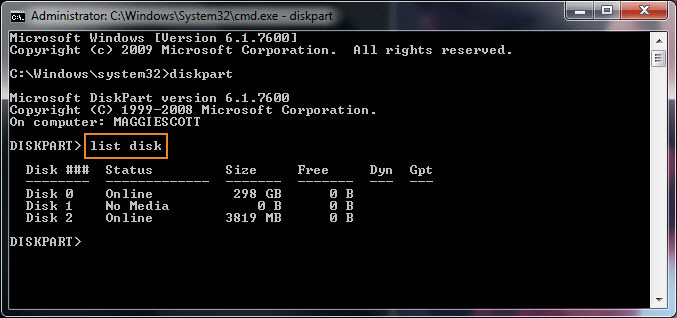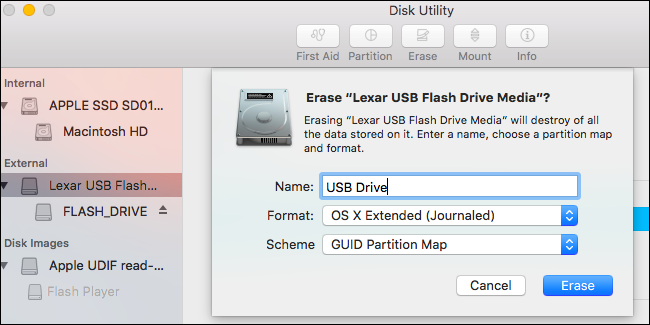- Format Usb Flash Drive Windows
- Which Flash Drive Format For Both Pc And Mac
- Adobe Flash Player For Mac
- How To Format Flash Drive For Mac And Pc
- Flash Drive For Mac And Pc

Dec 16, 2020 • Filed to: USB Recovery • Proven solutions
Will formatting a USB completely loses all of its data? Interesting question right? Many of your answers will be yes. But interestingly it won't. In this world of technology, nothing becomes impossible. Even after completely formatting all the files from an exFAT or FAT32 USB flash drive we can completely recover it or even we can repair the damaged data.
Here we explain it in such a way that each one of you can format USB drive without losing data.
Part 1: What Does Format Flash Drive Mean
Here's how to format a new flash drive (Thumb Drive/USB Stick) on a Mac for both PC and MAC. I use the exfat format so you can go between the two of them. On the left side of the window are the drives connected to the computer. Select the capacity of the drive respective to the one containing the device you wish to format then click the Erase tab. Example: If the drive is called 'NO NAME', directly above that, you should see the drive capacity of 'XXXX'. Select this capacity.
When we buy a new USB drive, we all make sure that the complete space available in the flash drive is empty. So what happens when we start adding files to the same? We know space starts to get occupied by the files.
But what happens if it is filled and we want to use it again in a fresh manner. There we use the technique called formatting which means we completely erase all the data and files inside the flash drive. So let us see how this works:
When we add data to a USB flash drive it creates a filing system that organizes the data while allowing you to store the most files possible. This virtual filing cupboard organizes your files in a way that makes your USB flash drive perform at its best.
Part 2: Will Formatting Flash Drive Erase Data
The answer to this question is a simple yes. Let us have a quick look at how it happens. Here we talked about organizing files. Files are allocated by certain systems that determine how and where your files are digitally stored. There are mainly 4 types of file systems for storage devices: FAT, FAT32, exFAT, and NTFS.
NTFS uses less fragmentation and therefore manages space more effectively. It also excels at transferring files larger than 4GB. However, this system is not always optimal for USB flash drives unless you need to transfer extra-large files.
FAT and FAT32 are supported by nearly every operating system, use less memory, and work faster. The file system exFAT combines the best of both NTFS and FAT for flash drives by reading and writing larger files at a faster speed.
Formatting is not complex either. If you have your flash drive and computer system, you already have all the tools you need.

Step 1: Right-click on your flash drive under My Computer and select Format.
Step 2: Choose from the drop-down menu for the File System to change it to its desired format. The default is generally FAT 32.
Step 3: Uncheck Quick Format if needed.
Step 4: Then, click Start and click OK to bypass the deletion warning.
Part 3: Is It Possible To Format USB Flash Drive Without Losing Data?
Yes, it is possible to format the removable disk without losing data. Let us see how this can be done.
Step 1: Backup data first before formatting
Step 2: Format USB flash drive
These steps don't need many explanations. Before doing the process of formatting you should create a backup of all the files and data of your drive. This can be done by any backup methods of your choice. Simply you can connect it to a computer and copy all the files to it and then do formatting drive.
Part 4: How to Recover Lost Data After Formatting
If you didn't make a backup before formatting or you find some files lost after formatting, are you worried about losing your data? No more worries because Recoverit Data Recovery is going to help you.
Recoverit Data Recovery - The Best File Recovery Software
- Ability to recover all files like photos, videos, documents, etc.
- Can retrieve data from all data loss scenarios.
- Ability to restore data from all storage devices (internal and external) and crashed windows system.
- Video repair tool that can repair corrupted videos under different scenarios.
How to Recover Lost Data From Your Storage Device Using Recoverit
To recover files, first, you have to launch Recoverit on your computer. To make Recoverit Data Recovery run on a Windows computer, you have to double click the 'Wondershare Recoverit' icon on the Desktop. If it is not available on the Desktop, you can enter 'Recoverit' in the search box on your Windows computer. And then click on the App or Choose to 'Open' it.
Step 1: Connect the external device
Format Usb Flash Drive Windows
Before getting Recoverit started, you need to connect the external device to your computer. Make sure that it can be recognized or detected.
Step 2: Select the external device
To recover lost or deleted files from the removable storage media, please select the device as the target location. And then hit on the 'Start' button. Even though the partition on the device has got lost, you can still use Recoverit to bring the lost data back.
Which Flash Drive Format For Both Pc And Mac
Step 3: Scan the external device
An all-around scan will be launched on the external storage media. Wait a few minutes to finish the scanning. During the process, you can locate the targeted files, as well as pause or stop it.
Step 4: Preview and recover files
Once the scanning ends, you can preview the files from the scanning result. To get the files back, click 'Recover' and save them into another safe location.
Conclusion
When you have lost files, the primary thing you would like to see is whether or not you've got a backup on your computer or other storage media. Just attend the backup and restore all of your files. Regularly creating a backup is extremely important and useful, it can assist you to save longer to recover files from USB drive when data got lost, and otherwise you should get the Recoverit USB Data Recovery software to recover your data back.
USB Topic
- Recover USB Drive
- Format USB Drive
- Fix/Repair USB Drive
- Know USB Drive
WARNING: Formatting will erase all data on the device. Back up all your data before proceeding.
Instructions below are for 10.11.x (El Capitan) and 10.12.x (Sierra)
1. Double-click on Macintosh HD - or in the Finder menu clickFile > New Finder Window
2. Click the Applications folder - if using a Finder Window Applicationswill be in the left side menu.
3. Click the Utilities folder.
4. Double-click Disk Utility.
5. On the left side of the window are the drives connected to the computer. Select the capacity of the drive respective to the one containing the device you wish to format then click the Erase tab.
Example: If the drive is called 'NO NAME', directly above that, you should see the drive capacity of 'XXXX'. Select this capacity.
6. Verify Volume Format is set to MS-DOS file system or exFAT, Scheme is set to “Master Boot Record” (Do NOT select GUID Partition Map) then click Erase.
Instructions below are for 10.13.x (High Sierra)

1. Open Disk Utility. Please See Answer 20985: How to access Disk Utility macOS
2. In the top menu bar, go to View, and choose Show All Devices

3. Select the upper level of the drive you would like to format and click the Erase button
Adobe Flash Player For Mac
4. Choose how you would like to format the drive
How To Format Flash Drive For Mac And Pc
- Enter a Name for your drive
- Choose exFAT or MS-DOS (FAT) for the format
- Choose Master Boot Record for the Scheme
- Click Erase
5. When finished, the drive will be formatted and repartitioned successfully. Click the Done button
NOTE: exFAT is used on SDXC card (64GB and higher).
NOTE: exFAT can be used on flash drives or memory cards to transfer files larger than 4GB.
Flash Drive For Mac And Pc
NOTE: MacOS 10.6.2 or higher is required for exFAT file system. Some older operating systems must have a patch installed before they can use the exFAT file system.
NOTE: If the above steps do NOT resolve the problem or if the lock switch is missing or broken, please back up your data and request a replacement using our online web form.
Related Articles:
Operating systems that support exFAT
Deleting files on a memory card using a Mac
Deleting files on a Cruzer USB flash drive using a Mac